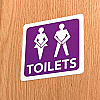Big arm-to-arm difference in blood pressure linked to higher heart attack risk

ARCHIVED CONTENT: As a service to our readers, Harvard Health Publishing provides access to our library of archived content. Please note the date each article was posted or last reviewed. No content on this site, regardless of date, should ever be used as a substitute for direct medical advice from your doctor or other qualified clinician.
The next time you have your blood pressure checked, ask your health care to check it in both arms, rather than just in one. Why? A big difference between the two readings can give you an early warning about increased risk of cardiovascular disease, a new study suggests.
Researchers at Harvard-affiliated Massachusetts General Hospital and colleagues measured blood pressure—in both arms—in nearly 3,400 men and women age 40 or older with no signs of heart disease. The average arm-to-arm difference was about 5 points in systolic blood pressure (the first number in a blood pressure reading). About 10% of the study participants had differences of 10 or more points. Over the next 13 years or so, people with arm-to-arm differences of 10 points or more were 38% more likely to have had a heart attack, stroke, or a related problem than those with arm-to arm differences less than 10 points. The findings, which appear in the March 2014 American Journal of Medicine, uphold earlier work on arm-to-arm differences in blood pressure.
Small differences in blood pressure readings between the right and left arm are normal. But large ones suggest the presence of artery-clogging plaque in the vessel that supplies blood to the arm with higher blood pressure. Such plaque is a signal of peripheral artery disease (cholesterol-clogged arteries anywhere in the body other than the heart). When peripheral artery disease is present, there’s a good chance the arteries in the heart and brain are also clogged, boosting the odds of having a heart attack or stroke.
While most cardiologists routinely measure blood pressure in both arms as part of an initial evaluation, most primary care doctors don’t. “Our study suggests that a baseline blood pressure measurement in both arms by primary care clinicians may provide additional information about cardiovascular risk prediction,” says study co-author Dr. Christopher O’Donnell, a cardiologist at Massachusetts General Hospital and associate professor of medicine at Harvard Medical School.
Here’s another reason to check blood pressure in both arms: if the pressure in one arm is higher, that arm should be the one upon which to base any treatments and to check your blood pressure in the future. (The current guidelines for managing high blood pressure are discussed here).
This study didn’t look at whether more aggressive treatment in people with high arm-to-arm blood pressure differences would help protect them from heart attack or stroke. Still, it’s worth finding out if you face a high risk of heart disease. That might inspire you to redouble your efforts to improve your cardiovascular health. To that end, the top six steps are:
- Don’t smoke. Tobacco smoke is as bad for the heart and arteries as it is for the lungs. If you smoke, quitting is the biggest gift of health you can give yourself. Secondhand smoke is also harmful, so avoid it whenever possible.
- Be active. Exercise and physical activity are about the closest things we have to magic bullets against heart disease and other chronic conditions. Any amount of activity is better than none; at least 30 minutes a day is best.
- Aim for a healthy weight. Carrying extra pounds, especially around the belly, strains the heart and tips you toward diabetes. If you are overweight, losing just 5% to 10% of your starting weight can make a big difference in your blood pressure and blood sugar.
- Enliven your diet. Add fruits and vegetables, whole grains, unsaturated fat, good protein (from beans, nuts, fish, and poultry), and herbs and spices. Subtract processed foods, salt, rapidly digested carbohydrates (from white bread, white rice, potatoes, and the like), red meat, and soda or other sugar-sweetened beverages.
- Drink alcohol in moderation (if at all). If you drink alcohol, limit your intake — one to two drinks a day for men, no more than one a day for women.
- Ease stress. Finding ways to ease stress, such as exercise, meditation, mindfulness, and other techniques, can take a load off the heart and arteries.
About the Author

Julie Corliss, Executive Editor, Harvard Heart Letter
Disclaimer:
As a service to our readers, Harvard Health Publishing provides access to our library of archived content. Please note the date of last review or update on all articles.
No content on this site, regardless of date, should ever be used as a substitute for direct medical advice from your doctor or other qualified clinician.











.jpg)




